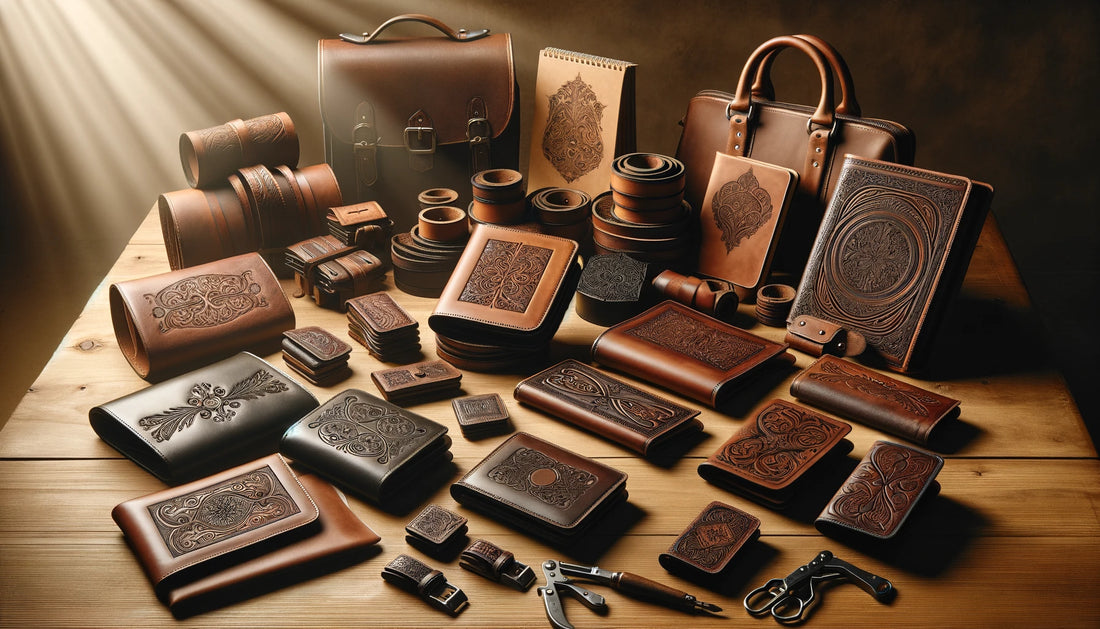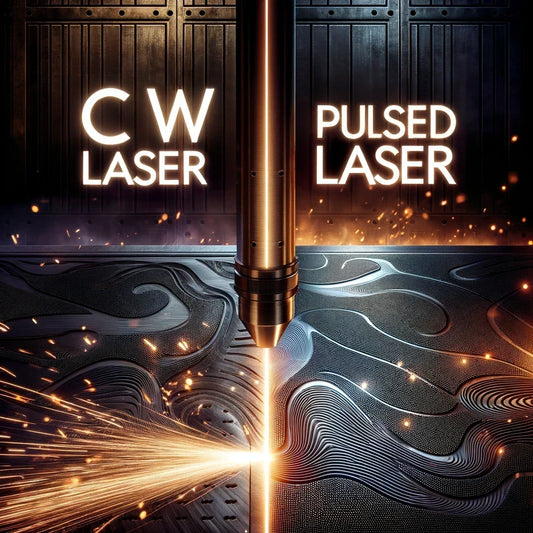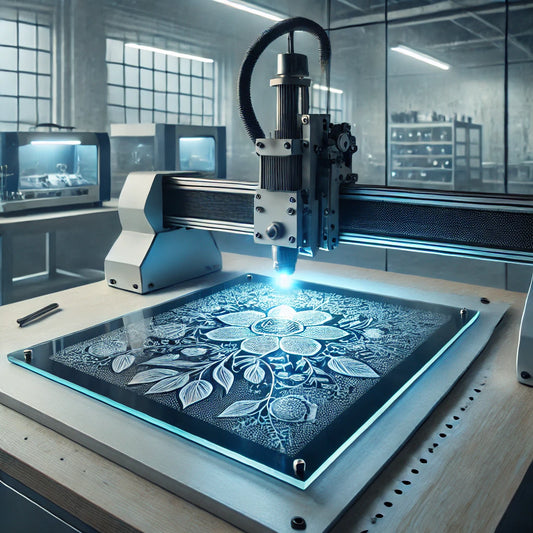
Leather Laser Engraving: The Ultimate Guide

Leather laser engraving is a cutting-edge technique that has revolutionized the world of leather craftsmanship. This technology allows for precision and creativity to merge, creating detailed and custom designs on leather goods that were once impossible to achieve. Whether you are looking to personalize a wallet, create intricate patterns on a belt, or brand a sophisticated leather bag, laser engraving offers an unparalleled level of detail and design freedom.
In this ultimate guide, we delve into the specifics of leather laser engraving, revealing how this modern technique works and the myriad of advantages it offers over traditional methods. We will also guide you through choosing the best type of leather for laser engraving, selecting the right machine for your needs, and providing expert tips to perfect the art of leather engraving.
From small-scale artisans to large-scale manufacturers, laser engraving on leather opens up new avenues for personalization and branding. As we explore this guide, we will equip you with the knowledge to elevate your leather projects, ensuring that your laser-engraved pieces stand out with professionalism and style.
How Laser Engraving on Leather Works

Laser engraving on leather is a process that utilizes the precision and control of laser technology to etch detailed designs onto leather surfaces. This is achieved by directing a concentrated beam of light, typically from a CO2 laser, onto the leather, which absorbs the laser energy. The heat from the laser beam alters the surface of the leather, creating a permanent, precise mark with high contrast.
The process starts with a digital design, which is created or uploaded into specialized software compatible with the laser engraving machine. This design can be anything from text to intricate patterns or images. The software translates the digital artwork into a format that directs the laser's path.
Once the design is finalized, the leather piece is placed onto the working area of the laser machine, and settings such as speed, power, and focus are adjusted according to the type of leather and the desired depth of the engraving. The laser head then moves over the leather, vaporizing the material's surface where the laser beam is focused. As the leather absorbs the laser energy, it burns away or changes color in the targeted pattern, resulting in a raised, tactile effect.
The precision of laser engraving allows for intricate designs and consistent replication, which would be nearly impossible to achieve with hand tools. Additionally, as the laser engraving process is non-contact, there is minimal risk of the leather warping or becoming distorted, which can occur with other mechanical engraving methods.
In summary, laser engraving on leather works by using a laser to burn and etch designs into the surface, providing a sophisticated way to customize leather goods with high-speed efficiency and finesse.
Advantages of Leather Laser Engraving
Laser engraving on leather offers a multitude of benefits specific to the material that traditional methods of marking cannot match. Here are several key advantages:
Precision and Detail
Laser engraving allows for exceptionally precise and intricate designs that are difficult to achieve with other techniques. The accuracy of a laser beam can create complex patterns and fine lines on leather surfaces, suitable for detailed logos, texts, and artwork.
Consistency
Unlike manual methods, laser engraving produces consistent results. Whether you're creating one piece or a thousand, each engraving will be virtually identical, ensuring a uniform look for branded or repeated items.
Speed and Efficiency
Laser engraving is significantly faster than hand-tooling or other conventional methods. Once the design is set, the laser engraver can reproduce the pattern quickly on multiple leather items, making it ideal for high-volume orders.
No Contact Process
Since the laser engraving process doesn't involve physical contact with the leather, there's minimal risk of the material being stretched, warped, or otherwise damaged. This is particularly advantageous for delicate or thin leathers.
Versatility
Laser engraving can be performed on almost any type and color of leather, providing versatility in application. It's suitable for a wide range of products, including wallets, belts, bags, and custom leather goods.
Customization
Offering unique personalization options is straightforward with laser engraving. It can accommodate custom designs for individual pieces without the need for new tools or extended setup times.
Durability
Engravings on leather are permanent and do not wear away with time or use. The laser alters the surface of the leather, ensuring that the design lasts for the life of the item.
Clean and Safe
The laser engraving process on leather is cleaner than traditional methods that require dyes or inks, which can be messy and toxic. Lasers work cleanly, without producing any byproducts that might require cleanup.
Eco-Friendly
Laser engraving is more environmentally friendly than methods that use solvents or inks. It reduces the number of consumables and waste, contributing to a more sustainable production process.
Reduced Costs
Without the need for physical engraving tools that wear out or specialized inks, the overhead costs for leather engraving can be significantly lower, especially when factoring in the longevity of laser equipment and the efficiency of the process.
What is the Best Leather for Laser Engraving?
When it comes to laser engraving, not all leather is created equal. The best leather for laser engraving is typically vegetable-tanned leather. This type of leather is treated with natural materials, resulting in a consistent and smooth surface that responds well to the laser engraving process. Here’s why vegetable-tanned leather, among others, stands out:
Vegetable-Tanned Leather
- Smooth Surface: It provides a clean and even surface for engraving, which allows for clear and precise designs.
- High Absorption: The natural fibers absorb the laser's energy effectively, producing a sharp contrast that makes the engraving stand out.
- Minimal Warping: Less prone to warping or deforming under the heat of the laser, preserving the shape and quality of the finished product.
Other Suitable Leathers
- Full-Grain Leather: Offers durability and a high-quality finish, though it may require careful power settings to avoid burning.
- Top-Grain Leather: Slightly thinner and more pliable than full-grain, it can also yield excellent engraving results.
- Bonded Leather: Made from leftover hide bits bonded together, it's more uniform and can be used for laser engraving, but the results can be less durable.
Leathers to Avoid
- Chrome-Tanned Leather: This type often contains chemicals that can release harmful fumes when laser engraved and may not provide the desired engraving quality.
- Faux or Synthetic Leather: Depending on the composition, some synthetic leathers can melt or burn unevenly under a laser. However, there are laser-friendly synthetics designed to mimic the engraving properties of natural leather.
Considerations for Choosing Leather
- Thickness: Thicker leather can withstand deeper engraving without damage, while thinner leather is better for surface-level designs.
- Color: Lighter-colored leathers typically provide a stronger contrast for the engraving but may require cleaning to remove residue from the engraving process.
- Finish: Leathers with less coating and finishing treatments often engrave more cleanly as there are fewer barriers for the laser to cut through.
Ultimately, the best leather for your project will depend on the specific requirements of the design and the intended use of the engraved item. It’s always recommended to test engrave a sample to ensure the settings and material meet your standards.
What are the Best Laser Engraving Machines for Leather?
When it comes to laser engraving on leather, the type of laser plays a pivotal role in determining both the quality of the finished product and the efficiency of the engraving process. The three primary types of lasers used in engraving are CO2 lasers, fiber lasers, and diode lasers. Each has its own set of characteristics that make it suited to different applications and materials, including leather.
CO2 Lasers
CO2 Lasers are the most commonly used for leather engraving due to their versatility and precision. They are particularly effective on organic materials like leather, producing clean, precise cuts and detailed engravings with minimal burning. CO2 lasers work by producing a beam of infrared light that is absorbed by the leather, vaporizing the surface layer to etch the desired design. They offer a balance of power and delicacy that makes them ideal for a wide range of leather products, from delicate, thin hides to thicker, tougher pieces.
Fiber Lasers
On the other hand, fiber lasers are typically used for marking metals but can also be used on certain types of leather. They use a seed laser that is amplified through a fiber optic cable, creating a focused beam that is particularly effective for achieving high-contrast markings. Fiber lasers are less commonly used for deep engraving on leather but are excellent for creating sharp, permanent marks without damaging the surface, making them suitable for branding or adding serial numbers to leather goods. Check our article where we compare fiber lasers and CO2 lasers.
Diode Lasers
Diode Lasers are a more compact and affordable option, making them accessible for hobbyists and small businesses. While not as powerful as CO2 lasers, diode lasers can still achieve good results on leather, especially for surface markings and shallow engravings. They are best suited for light-duty applications and can be a great entry point for those looking to explore leather engraving without a significant initial investment.
Choosing the best laser engraver for leather depends on the specific needs of your project or business. For most leather engraving applications, a CO2 laser provides the optimal combination of precision, versatility, and efficiency. It's well-suited to both cutting and engraving, offering the ability to work with a wide range of leather thicknesses and types. When selecting a laser engraver, consider the machine's power, work area size, and compatibility with your intended leather products to ensure it meets your requirements.
10 Tips for Leather Laser Engraving
Maximizing the quality of leather laser engraving requires attention to detail and technique. Here are ten tips to achieve the best results:
-
Choose the Right Leather
Opt for vegetable-tanned leather, which responds well to laser engraving by producing crisp, clear designs. Avoid chrome-tanned leather, as it can release harmful fumes during engraving and may not yield the same quality results. -
Test Settings Before Engraving
Always conduct a test run on a scrap piece of the same leather. This allows you to adjust the laser's speed and power settings to find the optimal balance for clarity without burning the leather excessively. -
Clean the Leather Surface
Ensure the leather is clean and free from oils or dirt before engraving. Use a soft cloth slightly dampened with water or a mild leather cleaner. A clean surface ensures uniform engraving and reduces the risk of unexpected marks. -
Use Low to Medium Power Settings
Starting with lower power settings helps prevent burning the leather. Gradually increase power as needed, based on your test engravings. This is especially crucial for thin or delicate leather. -
Focus on the Laser Precisely
Proper focusing of the laser is essential for sharp engravings. An out-of-focus laser can result in blurry or uneven designs. Refer to your machine's manual for instructions on how to adjust the focus correctly. -
Control the Speed
Adjusting the speed of the laser can impact the depth and darkness of the engraving. A slower speed results in a darker engrave, while a faster speed is better for lighter engravings. Find the right speed that works for your specific leather type and desired outcome. -
Protect the Leather from Excess Heat
Applying a thin layer of masking tape over the engraving area can help protect the leather from excess heat and reduce flare-ups. This technique also helps in achieving cleaner engraving lines. -
Keep the Laser Lens Clean
Regularly clean the lens of your laser engraver to ensure it's free from dust and debris. A clean lens provides a more focused and effective beam, crucial for detailed work on leather. -
Utilize Air Assist
If your machine is equipped with an air assist feature, use it to blow away smoke and debris during the engraving process. This helps in preventing the smoke from staining the leather around the engraved area. -
Post-Engraving Care
After engraving, gently clean the leather with a dry cloth to remove any debris. If necessary, lightly dampen the cloth with water for cleaning but avoid using chemical cleaners. Apply a leather conditioner to keep the engraved area supple and protect the leather from drying out.
How to Make Laser Engraving Black on Leather
Creating a stark contrast with a black engraving on leather can significantly enhance the visibility and appeal of the design. Here’s how to achieve a rich black engraving on leather:
-
Choose the Right Leather
Start with a high-quality, light-colored leather. Vegetable-tanned leather is ideal because it reacts well to the laser, producing a dark, contrasting mark.
-
Optimize Laser Settings
Adjust your laser's speed and power settings. A lower speed and higher power setting will typically darken the engraving as the laser has more time to burn the material. However, be careful not to burn the leather.
-
Pre-Treatment with Masking
Apply a thin layer of masking tape or a specialized laser mask to the area to be engraved. This can help create a more pronounced black mark as it prevents the leather from getting directly burnt, and the residue from the tape can darken the engraved area.
-
Post-Treatment with Leather Dyes
After engraving, use a leather dye or a blackening agent specifically made for leather work. Carefully apply it to the engraved area and wipe off any excess from the surface to avoid staining the non-engraved areas.
-
Seal the Engraving
To ensure the blackened area remains dark and is protected, apply a leather finish or sealant over the engraved section once the dye has dried. This will also help to preserve the leather and maintain the quality of the engraving.
-
Experiment with Different Techniques
There are several techniques to achieve a black engraving, including using different types of lasers like a CO2 laser, which can produce a darker mark on leather. Experimentation can help find the best method for your specific leather type and laser machine.
By following these steps, you can create a distinct and lasting black engraving on leather, enhancing both the design and the perceived value of the engraved product.
How to Clean Leather After Laser Engraving
Cleaning leather after laser engraving is an essential step to ensure the final product looks its best. The engraving process can sometimes leave a residue of charred material or smoke that needs to be removed carefully to avoid damaging the leather. Here's how to do it:
-
Immediate Wipe Down
Right after engraving, use a soft, dry cloth to gently wipe away any loose debris or dust from the surface. This helps prevent any particles from settling into the engraved grooves.
-
Damp Cloth for Residue
For more stubborn residues, lightly moisten a microfiber cloth with water and gently rub the engraved area. The key is to use as little moisture as possible – leather doesn’t take well to excessive water.
-
Specialized Leather Cleaner
For tougher marks, apply a small amount of a mild, leather-safe cleaner to a soft cloth and carefully clean the engraved area. Avoid harsh chemicals or abrasive cleaners that could damage the leather's finish.
-
Soft Brush for Grooves
If the design has deep grooves that hold onto debris, use a soft-bristled brush, like a toothbrush, to gently loosen and remove any remaining particles.
-
Conditioning
After cleaning, it's beneficial to apply a leather conditioner. This replenishes the oils that may have been stripped away during the engraving and cleaning processes, helping to keep the leather supple and prevent cracking.
-
Avoid Alcohol and Solvents
Steer clear of cleaning agents that contain alcohol or solvents, as these can cause the leather to dry out, fade, or crack, significantly shortening the lifespan of the engraved item.
-
Test First
Before applying any cleaner or conditioner, always test it on a small, inconspicuous area of the leather to ensure it doesn’t cause any discoloration or damage.
By following these steps, you can effectively clean your laser-engraved leather items without compromising the quality of the leather, ensuring your engraved designs remain sharp and clear.
Conclusion
Leather laser engraving stands as a transformative method for customizing and personalizing leather goods, merging traditional craftsmanship with modern technology to offer unparalleled precision, versatility, and efficiency. This guide has navigated through the essentials—from selecting the right type of leather and laser engraving machines to mastering the art of achieving the perfect black engraving and maintaining the integrity of the leather post-engraving. The advantages and tips provided underscore the method's value not just in terms of aesthetic appeal but also in operational efficiency and the opportunity for creativity it presents to businesses and artisans alike.
As we wrap up, it's clear that the potential of laser engraving on leather is limited only by one's imagination. Whether you're looking to start a venture in personalized leather goods or enhance the offerings of an established business, the insights shared here pave the way for excellence in leather laser engraving. Embracing this technology can lead to high-quality, durable, and uniquely customized products that stand out in the market, ensuring satisfaction for both the creator and the end consumer.



